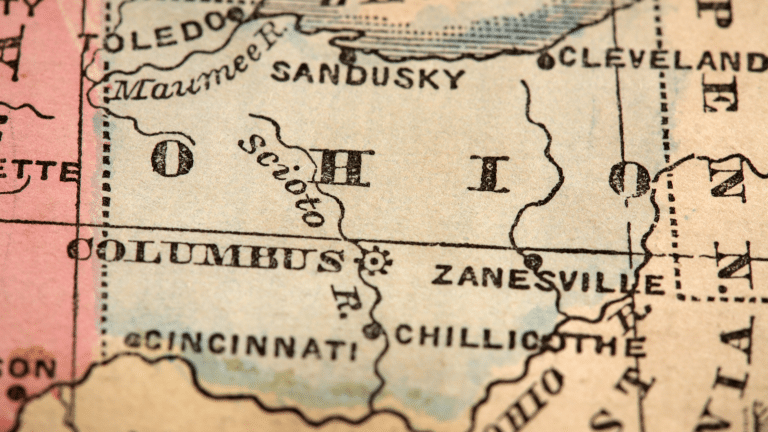
Yes, Ohio is Getting Warmer
When we think of climate change or global warming, we tend to think about polar ice caps melting, sea levels rising, desertification in certain areas, flooding in other areas and extreme weather events. However, being a person who has lived their entire life in the Midwest (specifically central Ohio) these are not things I have seen firsthand. Since Ohio does not have an ocean coast, there are no polar ice caps and though we have the occasional drought or drought like conditions, we do not experience droughts that last for seasons or years that dry up large bodies of water. The question becomes: “How is climate change affecting Ohio?”
I can remember cold winters and pleasant summers as a child in the 1970’s and 1980’s but now I seem to need my heavy coat, gloves, and hats less and less. In the summer it seems like it is always hot and doesn’t cool down overnight. This year it seems like we are having a nice spring with a gradual warm up instead of summer starting way too early, which is what it has seemed like the past few years with little warm up- just rain and then hot. This led me to want to investigate if my recollections were accurate or how climate change is affecting Ohio.
Overall, Ohio has increased 1.2° F (.7°C) in annual mean temperature (downloadable PDF of “How Will Global Warming of 2°C Affect Ohio?”). Columbus, Ohio has seen an increase of 2.3°F (1.2°C) in annual average temperature since 1951 (downloadable PDF of “Historical Climatology: Columbus, Ohio”). 2°C is considered to be the tipping point for climate change/global warming. If you would like to learn more about how the 2°C temperature came to be check out the website “Why did the IPCC choose 2° C as the goal for limiting global warming?” So, from these two pieces of information, we can see that Ohio is warming and that central Ohio is warming faster than the national or global rate (Historical Climatology: Columbus,Ohio). To give some perspective on the warming rate, the National Oceanic and Atmospheric Association (NOAA) shows that the planet surface temperature has increased approximately .18°C every decade since 1981. With that rate of increase, we will reach the 2°C fairly quickly.
The simple answer is that Ohio is averaging warmer than when my generation were children. The last freeze in spring and the first freeze in the fall have “changed by more than 10 days” each (Historical Climatology: Columbus, Ohio). Winters are less snowy, milder, and shorter. This has increased the freeze-free (growing) season by 25.5 days in the central Ohio area from 1951-2012 (Historical Climatology: Columbus, Ohio). That is almost a month less of cold weather! When we think of spring being warmer or fall not cooling down as fast, this is the effect climate change is having on Ohio because these seasons are changing quickly. Winter activities many of us enjoyed as children such as snow days and sledding are becoming less frequent.
Another impact climate change is having on Ohio is the increase in precipitation, predominantly rain. “Annual precipitation rose 19.8%” in the central Ohio area, similar to other areas of Ohio. Fall (September – November) increased by a staggering 43.5% since 1951 (Historical Climatology: Columbus, Ohio). When you see flooded fields that farmers can’t plant, you are witnessing global warming and its effects here in Ohio. An increase in flooding and humidity will also cause fungal diseases to increase both in home gardens and in agricultural fields.
Additionally, summer temperatures are rising. An interesting observation was that overnight temperatures in central Ohio have “warmed four times as fast as mid-day high temperatures” (Historical Climatology: Columbus, Ohio). As a person who typically uses the cooler overnight air to cool my home, this is going to reduce my ability to conserve energy in this way. An increase in summer temperatures added to not cooling down will cause more heat related illnesses, especially in large urban areas that stay warmer than rural areas.
Now that we have given you the bad news that Ohio is indeed warming, just not in the same way it is typically described in the media, there is good news! We can make changes that will slow/stop global warming and the warming of Ohio. University of Maryland Center for Environmental Science has a great website that lets you see the projections for the warming in your area as well the difference we can make by reducing our environmental impact.
What YOU can do to reduce your environmental impact: conserve energy! How?
- Turn your HVAC system off when you can
- Turn your thermostat up a degree or two in the summer or down a degree or two in the winter
- Turn off unused lights or use a timer for lights
- Reduce water usage – not only saves water but also saves energy
- Unplug electronics that are energy vampires
- Eat local
- Remember everything uses energy – from shipping to manufacturing to packaging.
Together, we CAN make a difference.
Subscribe to Energility Tips

